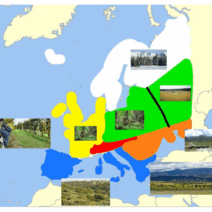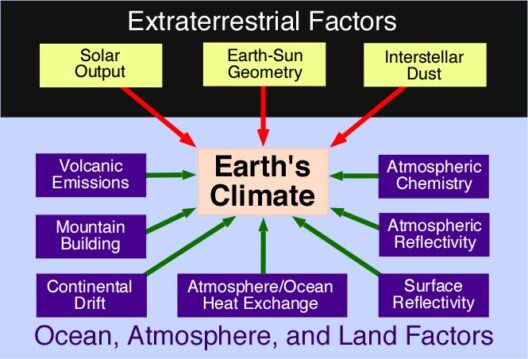As climate change progresses, the prospect of living underground emerges as a provocative solution to insufferable heat, rising sea levels, and extreme weather patterns. With the planet experiencing unprecedented challenges, it warrants a thorough examination of the feasibility, benefits, drawbacks, and societal implications of subterranean habitation. Could we indeed find refuge beneath the Earth’s surface, or would such a transition merely serve as a temporary respite from an enduring dilemma?
The discourse surrounding underground living primarily revolves around the increasing frequency and intensity of climate-related disasters. Floods, hurricanes, and heatwaves overwhelm communities, leading to significant loss of life and infrastructure. Underground living could provide a viable alternative for entire populations as urban areas become increasingly inhospitable. But, is this seismic shift away from traditional habitat truly attainable?
First and foremost, it’s essential to understand the conditions that may necessitate underground living. As global temperatures rise, many regions could become unlivable due to extreme heat. Cities known for being blistering hot might experience deadly heatwaves that render outdoor environments uninhabitable. The idea of transforming our cities from above ground to below ground is not entirely new. Consider the historic catacombs or the extensive underground networks in cities like Montreal and Tokyo, which serve as vibrant urban extensions. These examples indicate that subterranean environments can indeed support human life, but they also raise significant questions about livability and sustainability.
In terms of feasibility, the technology to develop underground habitats already exists. Innovations in engineering and architecture could transform drilling and construction techniques, enabling us to create efficient living spaces below the Earth’s surface. Complex ventilation systems, ambient lighting strategies, and advanced insulation could counteract environmental challenges. Furthermore, existing underground infrastructures provide a wealth of data about temperature regulation, humidity control, and general habitability that could inform future designs.
However, shifting an entire population underground presents considerable logistical challenges. Mindful planning would be needed to address potential geological hazards such as cave-ins or flooding, making site selection an essential process. Likewise, the ecological impact of such ventures must be meticulously evaluated. The subterranean environment is delicate, and drilling into layers of soil and rock could disrupt ecosystems that have thrived for millennia.
Beyond the technical challenges, there lies the question of psychological and sociological impacts. Humans are innately inclined toward light, space, and nature. Life above ground promotes mental health and wellbeing; research indicates that exposure to natural light positively affects mood and cognitive function. Transitioning underground could potentially lead to feelings of claustrophobia or deprive individuals of much-needed sunlight. Thus, designs must incorporate biophilic principles, which integrate natural elements into architecture, ensuring that underground spaces do not foster a sense of entrapment.
Another dimension to consider is the sustainability of such underground living. Would these subterranean havens be equipped with renewable energy sources? Sustainability in food production, water supply, and waste management is paramount if we are to transition our lifestyle beneath the surface without exacerbating existing environmental strains. Hydroponic farms, vertical gardens, and solar energy harnessing could form integral components of underground sustainability models.
Furthermore, the socioeconomic implications of creating underground communities cannot be overlooked. Who would have access to this underground refuge? Would it be the wealthy elite with the financial means to secure such safety, or could we envisage an egalitarian model where all segments of society are provided for? This needs careful consideration, as issues of equity and access would influence societal dynamics.
Moreover, a move towards subterranean living could technology’s role in combating climate change. The potential exists for innovative solutions and research collaborations that harness technological advancements to create closed ecosystems that sustain human life underground. These creations may serve as important tests for humanity’s adaptability against climate change.
In contemplating the future, we must also understand the long-term implications of such a drastic lifestyle change. Living underground might serve as a stopgap measure against immediate threats posed by climate change, but it raises philosophical questions about humanity’s relationship with the planet. Are we retreating from the surface, ultimately abandoning it? Perhaps, instead of alteration, we should focus on restoration—enhancing our existing ecosystems and fortifying our planet against climate impacts.
The thought of living underground can serve as a catalyst for frank discussions about environmental preservation and adaptation strategies for a world grappling with climate change. Whether or not humanity chooses to inhabit the underground in the face of worsening climate conditions is yet to be determined, but the very contemplation of such a move prompts us to rethink our place in the natural world. It beckons a perspective shift towards resilience and innovation.
Human ingenuity knows no bounds, and while living underground may seem an extraordinary response to a pressing global crisis, it highlights our relentless pursuit of survival and adaptation. The future remains unwritten, but by exploring these possibilities, we can better prepare for whatever challenges await.







